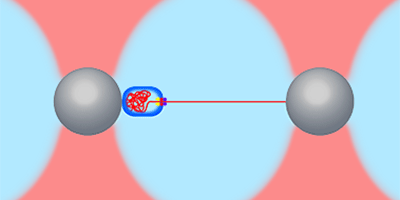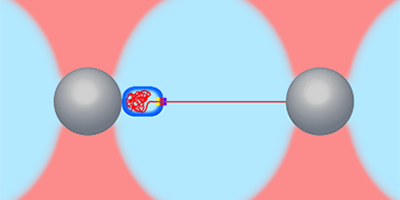Repulsion Helps Virus Pack DNA
A virus in the process of assembling uses a molecular motor to pull a long strand of DNA produced by the host cell into its newly constructed external shell. The negatively charged DNA is self-repulsive, and as it collects inside, the packaging motor has to push against an increasing outward pressure. But experiments reported in Physical Review Letters show that, surprisingly, switching the DNA self-interaction from repulsion to attraction doesn’t help the motor. It works fastest when there is some degree of repulsion, perhaps because the repulsion can prevent the biopolymer from becoming entangled with itself, like a long strip of sticky tape.
Douglas Smith of the University of California, San Diego, and his colleagues, used optical tweezers to track the motion of a DNA strand as it was “reeled in” by an assembling virus. They compared the motor’s performance in a standard solution with that of two other conditions—low and high concentrations of the positively charged molecule spermidine. At the lower concentration, spermidine screens the negatively charged DNA polymer, reducing but not eliminating its self-repulsion. At the higher spermidine concentration, DNA becomes self-attractive.
As expected, the reduced self-repulsion of DNA in the low-spermidine condition led to more rapid packaging than the standard solution. But the team was surprised that high concentrations of spermidine (self-attractive DNA) did not further accelerate packaging. Instead, it frequently caused the motor to stall or to operate more slowly. The team proposes that some degree of repulsion is required to keep the DNA orderly during the packaging process. – David Ehrenstein





